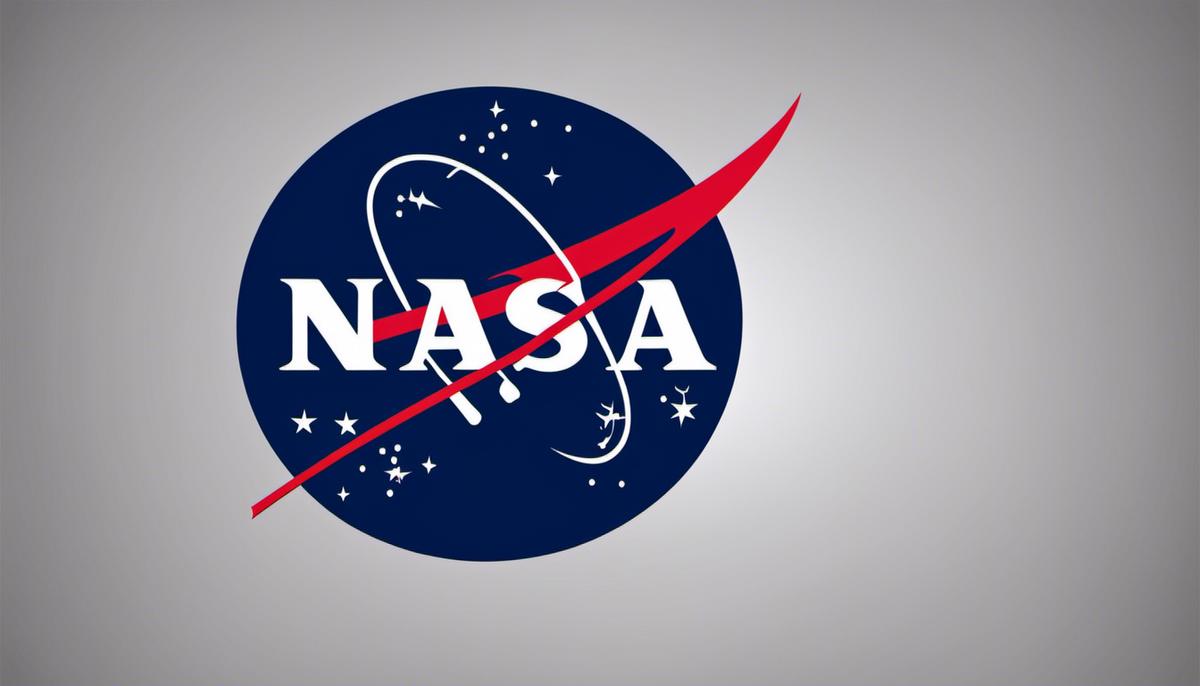Unveiling the mysteries of space and the infinite beyond, the National Aeronautics and Space Administration (NASA) is well-known for pioneering advanced technologies through a myriad of programs. However, shrouded in secrecy lie the ‘Black’ projects of NASA, independent of their mainstream missions. The term ‘NASA Black’ refers to classified ventures that usually engage in clandestine surveillance or research. Sprouting from an era of intense geopolitical climate during the mid-20th century, these projects stand as testament to the name: derived from the invisible nature of an object when light is completely absorbed without reflection, symbolising the secrecy and undisclosed information encapsulated within the projects. Concurrently, it’s fundamental to differentiate between the visible public activities of NASA and the highly secretive black projects to truly grasp the breadth and diversity of NASA’s endeavours.
What is NASA Black
Defining NASA Black
‘NASA Black’ is a term that is often used to refer to classified projects undertaken by the National Aeronautics and Space Administration (NASA). These are typically advanced projects that have largely remained hidden from the public eye due to their sensitive or secure nature. The title ‘Black’ signifies the high level of classification and the severe lack of available public information about these projects.
Origin of the Term ‘NASA Black’
The ‘black’ in ‘NASA Black’ is believed to originate from the concept of ‘black budget’ or ‘black projects’, which are classified operations that the U.S. government funds but doesn’t make public. The details of the project, including its budget appropriation, are kept secret from the general public.
NASA’s Classified Projects
The extent and scope of NASA’s classified projects are unknown to the general public due to their top-secret nature. However, it has been understood that many of these involve highly technical research and innovative development in fields such as rocket propulsion systems, advanced satellite technology, space exploration, and cybernetics, to name a few.
NASA has a history of involvement in classified or ‘black’ projects. For instance, during the height of the Cold War in the 1960s, the Corona Project, a strategic photographic reconnaissance project conducted in collaboration with the U.S. Air Force, was one of NASA’s first classified initiatives. It aimed to take high-resolution images of USSR territory from space, producing important intelligence during a critical time in history.
Purpose and Significance
NASA’s classified or ‘black’ projects serve multiple purposes. Their primary function is to support the U.S.’s strategic needs using advanced space and technology research. They serve an essential role in maintaining the country’s advancement in space technology and ensure it has the upper hand in space exploration and utilization.
Though often shrouded in mystery, these ‘black’ projects also play a pivotal role in scientific advancement. Many times, the technologies developed in these projects later find civilian applications, leading to breakthroughs in various fields of science and technology.
The secrecy around these programs sustains national security, technological superiority, and maintains a strategic advantage over other nations in space exploration and related research fields.
Understanding NASA’s Black Projects
‘NASA Black’ refers to the classified projects of great technical complexity, carried out under the aegis of NASA. These endeavors are stealthily conducted with the ultimate goal of bolstering and furthering the United States’ supremacy and interests in the realms of space exploration and technological advancement.

Notable NASA Black Projects
The Enigma of NASA’s Black Projects
The phrase “Black Projects” is often tied to secretive, big-budget operations, typically related to national security or cutting-edge technology. Though NASA is chiefly identified with its civil space missions, it does not escape an association to a number of these intriguing black projects.
Stealth Satellite: Misty
One such project is the Misty satellite program. In the late 1980s and early 1990s, NASA in collaboration with the National Reconnaissance Office, implemented the stealth photo reconnaissance satellite Misty. The purpose was to achieve covert imagery intelligence from space, undetected by foreign entities. However, details of the programming, design, and mission specifics remain classified information.
Aerospace Technologies: Aurora and X-37
Aurora, an alleged hypersonic aircraft project, was suspected of being developed in the mid-1980s. Rumors circulated that the Aurora was capable of reaching speeds above Mach 5, using pulse detonation engine technology, yet NASA and the Pentagon remain silent.
The X-37 began as a NASA project in 1999, before being transferred to the US Department of Defense in 2004, under a cloud of secrecy. This unmanned, reusable spacecraft has been launched multiple times, sparking rumors about its potential uses for reconnaissance or weapons deployment. The exact nature of its missions is undisclosed.
Historical Secrecy: Project Horizon and Project A119
Additionally, historically significant projects emerged from the archives of NASA’s history. Project Horizon, a U.S Army proposal from 1959, intended to create a permanent military base on the moon. While not explicitly under NASA, many personnel had dual roles within the organizations.
Project A119, another historical venture was a study by the US Air Force in the late 1950s and early ’60s in collaboration with NASA. This secret study aimed at detonating a nuclear bomb on the moon as a display of military prowess against the Soviet Union during the cold war era.
Decoding the Enigma: NASA’s Black Projects
Due to the sensitive aspect of these operations, most of NASA’s black projects are shrouded in deep secrecy, generating a sense of intrigue and uncertainty among the public. The detailed specifics surrounding these clandestine projects, driven by their classified nature, are notoriously tough to uncover. Despite their significant contributions to the advancement of aerospace technology, defense strategy, and military capabilities, the actual scopes and impacts of these projects largely remain a mysterious matter concealed within NASA’s black projects.

Technical Aspects of Black Projects
Unveiling the Technicalities: What Do NASA’s Black Projects Involve?
Classified due to their sensitive and advanced nature, NASA’s black initiatives propel the possibilities of our existing technological knowledge and space exploration. The utilization of the term “black” signifies their top-secret status and doesn’t associate with any specific characteristics of individual projects. These operations generally consist of the inception, development, and application of cutting-edge space technologies, further augmenting the realm of space technology.
Design Aspects
The design aspect of NASA black projects frequently involves innovative ideas that have not been previously explored. The intention is to create a plausible vision of the future that could help understand space better and upgrade our technological and scientific capabilities. The design process includes multiple aspects, such as conceptualization, development, and testing phases. The conceptualization stage allows engineers and scientists to brainstorm innovative ideas. The development phase focuses on making these ideas technically feasible. Lastly, the testing phase involves thorough scrutiny of the proposed design under multiple scenarios.
Technologies Involved
NASA’s black projects typically involve the use of advanced technologies. Pioneering techniques in propulsion, materials science, power generation, and communication and navigation systems are often a core part of these projects. For instance, nuclear propulsion, advanced thermodynamics, and high-efficiency solar arrays are among the technologies that have been researched under such programs. However, specifics about these technologies remain classified information.
Challenges Faced
Implementing black projects is riddled with immense challenges due to the sensitive nature of these projects and the advanced technologies involved. The secrecy and lack of information sharing associated with these projects can lead to barriers in technical development. Limited peer review and feedback loops can also be hurdles in these projects’ effective execution.
Moreover, failures in black projects can be costly, both in terms of finances and human resources, due to their complex and pioneering nature. It often requires a high level of adaptability and innovation to overcome these challenges.
Maintenance of Black Projects
Maintenance of black projects presents another set of technical complexities. Due to their classified character, the standard maintenance techniques often do not apply. A unique set of procedures is required to assure the operational efficiency and integrity of these projects. The continuous upgrade of the technologies used also necessitates the need for an advanced maintenance plan.
The fundamental importance of NASA’s classified projects
Despite any potential hindrances, these clandestine operations – popularly known as NASA black projects – play a pivotal role in extending our understanding of the outer space and the invention of innovative technologies.

NASA Black Projects: Myths Vs Facts
Unraveling the Mystery Behind NASA’s Black Projects
When one hears of ‘NASA Black,’ it naturally conjures images of highly classified and secret missions undertaken by NASA, the National Aeronautics and Space Administration. But, it is essential to acknowledge the difference between conspiracy theories or misconceptions and factual information related to these covert tasks.
Misconceptions about NASA Black
One of the most popular misconceptions is the idea that NASA operates secret space programs or moon bases as part of their ‘black’ projects. These speculative concepts often find root in media or popular culture and have been widely debunked. Despite popular belief, NASA is a civilian space agency and any classified operations they might have, are related to technology development, research, and sometimes joint operations with Department of Defense, but they are far from the cloaked and clandestine activities depicted in cinema and literature.
Unraveling the Truth about Classified Projects
When considering NASA’s classified projects, these relate to specific technologies or practises that are of national importance or linked to matters of state security. One example of such projects is the forebear of the Space Shuttle program, referred as the Blackbird, originally developed under a classified project. The existence of such projects might be known, but the specifics are kept classified to maintain technological advantages and national safety.
NASA and Department of Defense: A Collaborative Relationship
NASA’s relationship with the Department of Defense is another point of supposed controversy. Given both organizations share technological and explorative interests, periodic collaborations are common. For instance, NASA has launched several classified payloads for the Pentagon’s National Reconnaissance Office. This, however, does not imply that the Department of Defense dictates or influences NASA’s primary objectives and missions.
NASA Transparency and Accountability
Lastly, it’s vital to understand that NASA operates under the public eye with most of its projects and researches being openly published and peer-reviewed. Its budget, mandates and major projects are subject to review and auditing by U.S Congress. NASA’s commitment to public accountability highlights the high degree of transparency in the organization’s operations, debunking the idea that it frequently operates ‘black’ or hidden projects.
In essence, while NASA is engaged in managing classified projects and possesses certain undisclosed technological dimensions, the notion of ‘NASA Black’ depicted as a covert body conducting vast, hidden space programs largely stems from misinterpretations. This perception is more a manifestation of theoretical fiction rather than an accurate representation of the way NASA functions.

Current and Future Black Project
A Closer Look at NASA Black Projects
Designated as classified or unacknowledged special access programs (USAPs), NASA’s black projects are kept under wraps from the eyes of the general public and often even certain governmental departments, either due to reasons of national security or in order to maintain a proprietary edge. The secretive nature of these initiatives makes gathering comprehensive and trustworthy data about them quite challenging. Yet, some of these black projects have been officially revealed or surfaced due to independent investigations and information leakage.
Current Black Projects
NASA’s X-37B Orbital Test Vehicle is one of the few acknowledged black projects. The unmanned spacecraft has completed many profitable missions to date, with each launch raising a new set of questions and speculations. While NASA releases limited information on the spacecraft and its mission objectives, it is believed that the X-37B is used for various research and development activities, involving reusable spacecraft technologies, as well as intelligence and reconnaissance missions.
Another ongoing project is NASA’s new X-59 QueSST (Quiet Supersonic Transport) aircraft, aiming to develop a commercially viable supersonic aircraft that reduces the sonic boom to a more tolerable level. Although not officially acknowledged as a black project, it is believed that the developments from this project will also contribute to the advancement of military aviation technologies.
Future Prospects
While concrete information about future black projects is understandably scarce, experts and enthusiasts speculate based on patterns, scientific advancements, and global context. One possible area of focus could be advanced propulsion technologies aimed at significantly reducing the time to travel between planets, paving the way for manned missions to Mars and beyond.
With the recent surge in interest and investment in quantum technology and Artificial Intelligence (AI), it is likely that future black projects might involve these areas as well. Quantum computing, for instance, has the potential to drastically alter computational ability, which could greatly benefit space exploration missions. Similarly, advancements in AI could revolutionize unmanned or partially manned space missions, space-based reconnaissance, and threat detection systems.
The Implications
While the clandestine nature of black projects often makes them subjects of intrigue and speculation, it is essential to remember that these endeavors directly contribute to advancements in our understanding of space exploration, aerospace technology, and potentially other scientific and technological fields. They serve critical functions in furthering our knowledge and progress in space and sometimes result in technology that eventually trickles down to civilian use. For instance, technologies developed for NASA’s satellite programs have been repurposed to improve GPS systems, weather forecasting, and even internet connectivity.

Fascinating as they are, NASA’s classified or ‘Black’ projects are symbols of untold stories from the past and inroads into pioneering technologies for the future. The challenges and advancements faced in the black projects’ technical aspects underscore the triumph of human intellect in an ever-evolving environment of space exploration and surveillance. Demystifying misconceptions revolving around these projects and highlighting the reality becomes a significant step towards understanding the wider spectrum of NASA’s operations. While the factual details of current and future projects largely remain undisclosed, what is discernible is that NASA continues to push the boundaries of exploration and technology, maintaining secrecy where necessary, thus keeping the flame of curiosity alive.
![]()
